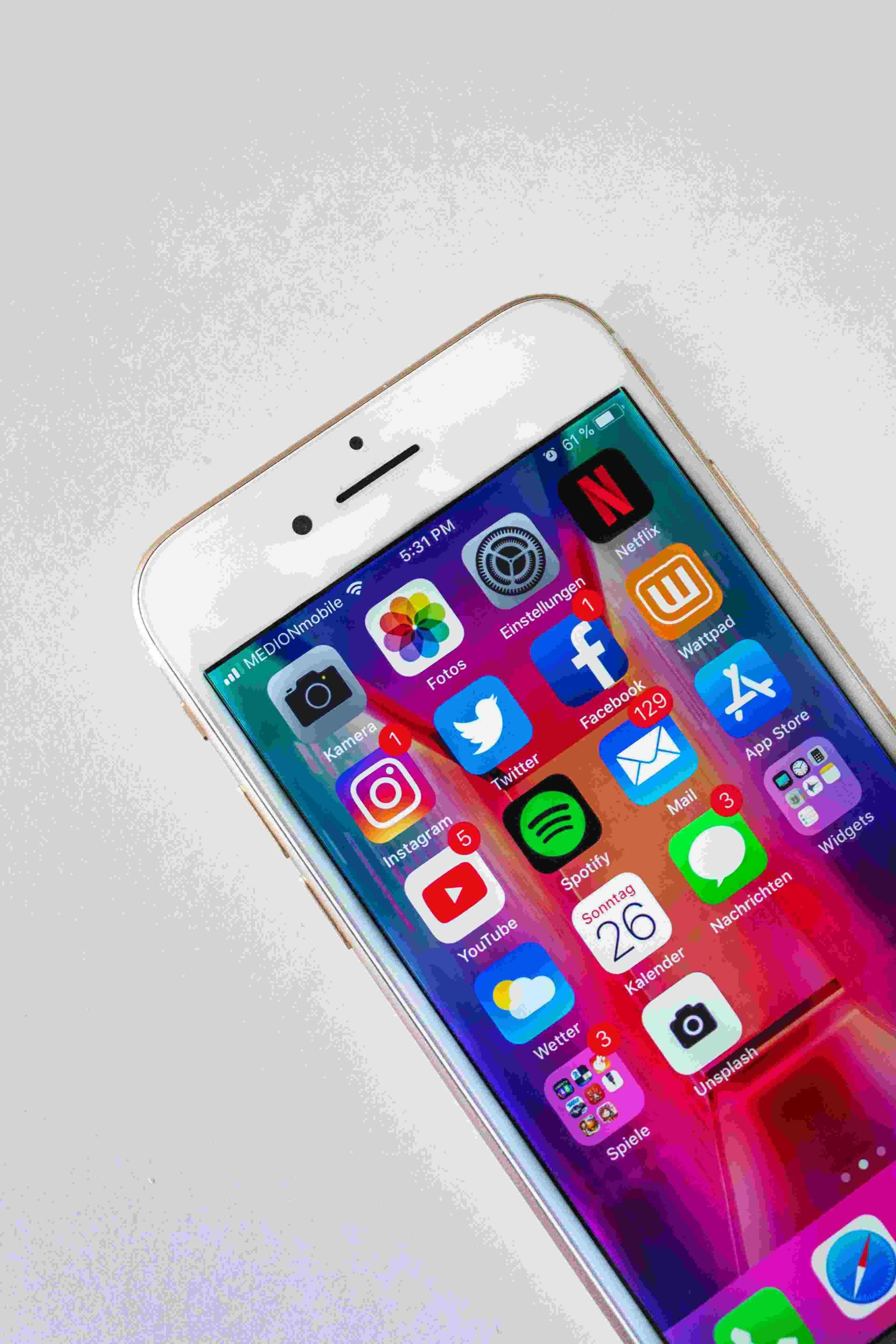
- September 15, 2025
- 19
- No Comments
How to Become a Social Media Freelancer in 2026
Table of Contents
ToggleGetting Started as a Social Media Freelancer in 2026
In today’s digital-first world, social media has become much more than a place to share selfies, memes, or vacation pictures. It’s where businesses connect with their customers, where brands tell their stories, and where trends can spread globally within hours. Behind every eye-catching post, viral video, or engaging campaign, there’s usually someone who planned, created, and executed the strategy. And in many cases, that person isn’t an employee sitting in a company office but a freelancer, an independent professional offering social media services to different clients.
Social media freelancing has opened doors for thousands of people around the world who want flexibility, independence, and the opportunity to earn money doing creative work. The best part is that you don’t need a degree in marketing or years of experience to get started. With the right skills, a bit of determination, and a willingness to keep learning, almost anyone can step into this career path.
Social media freelancing has opened doors for thousands of people around the world who want flexibility, independence, and the opportunity to earn money doing creative work. The best part is that you don’t need a degree in marketing or years of experience to get started. With the right skills, a bit of determination, and a willingness to keep learning, almost anyone can step into this career path.
What Exactly Is Social Media Freelancing?
When we talk about social media freelancing, we’re referring to offering services like content creation, account management, campaign strategy, or advertising to businesses and individuals, but without being tied down to a full-time job. Instead of having one employer, freelancers usually work with several clients on a project or contract basis. This independence means you have the freedom to choose who you work with, what kind of projects you want to take on, and how much you want to charge.
For example, a freelancer might be creating Instagram reels for a small clothing brand in the morning, drafting LinkedIn posts for a corporate CEO in the afternoon, and running Facebook ads for a local café in the evening. The work is varied, and while that can feel overwhelming at first, it also means you’re constantly learning and growing. Unlike traditional jobs, freelancing allows you to shape your career around your strengths and passions.
Why Social Media Freelancing Is a Growing Career Option in 2026?

The reason freelancing in this field is exploding is simple: businesses can’t survive without social media anymore. Think about it, when you hear about a new restaurant or product, what’s the first thing you do? You probably check their Instagram or Facebook page. If they’re not active online, they instantly lose credibility in the eyes of potential customers.
However, many businesses don’t have the budget to hire a full-time social media manager or a full agency. That’s where freelancers come in. They offer specialized services at a fraction of the cost, making it possible for even small businesses to have a professional online presence. With billions of people scrolling through apps like TikTok, Instagram, and LinkedIn daily, the demand for freelancers who know how to create engaging, trend-savvy content has never been higher.
Who Can Become a Social Media Freelancer?

One of the most appealing aspects of this career is that it’s accessible to almost anyone. You don’t have to be a marketing graduate or have years of corporate experience under your belt. What you do need is creativity, curiosity, and a willingness to learn. Students often get into freelancing as a side hustle, using their free time to manage accounts for local businesses. Professionals who feel stuck in their 9-to-5 jobs sometimes turn to freelancing for more flexibility. Even stay-at-home parents who want a flexible income stream can find opportunities managing accounts for small brands.
If you enjoy writing, designing, making videos, or simply keeping up with social media trends, freelancing might be the perfect fit for you. The internet has leveled the playing field, and as long as you can demonstrate your skills and deliver results, clients won’t care about your background, they’ll care about what you can do for them.
What Does a Social Media Freelancer Actually Do?
To an outsider, social media freelancing might sound like just “posting pictures and captions,” but the role is much more strategic. A freelancer’s tasks can vary widely depending on the client. Some days, you might be brainstorming campaign ideas and writing captions. Other days, you might be scheduling posts, replying to comments, or editing videos. For businesses that want to grow faster, freelancers often run advertising campaigns, analyze performance data, and adjust strategies based on what’s working.
For example, if you’re working with a small skincare brand, you might start by creating Instagram reels showing how to use the products, then run ads to reach more people in a specific city. You’d also track how many people clicked the link in the bio, how many followed the account, and which type of content got the most engagement. By doing this, you’re not just posting content, you’re directly contributing to the brand’s growth.
How Freelancing Compares to Agency Work and Full-Time Jobs
It’s helpful to understand the difference between freelancing, agency work, and full-time employment. As a freelancer, you’re your own boss. You decide when you work, how you work, and which projects to take. Agencies, on the other hand, usually have teams of people working on several brands at once. The work is more structured, but you have less flexibility. A full-time job means you’re dedicated to one company, which provides stability and benefits, but you lose the freedom to choose your projects.
Many people choose freelancing because it offers independence and variety. Instead of being tied down to one role, you can explore different industries, experiment with new platforms, and build a portfolio that reflects your personality and strengths.
The Skills You’ll Need

You don’t need to be an expert at everything to start, but developing a mix of creative and technical skills will make you more valuable. Writing and copywriting are essential, because at the heart of every social media post is a message that needs to connect with the audience. Basic graphic design skills are also useful, since eye-catching visuals often decide whether someone stops scrolling. Video editing has become increasingly important with the rise of TikTok and Instagram Reels.
But freelancing isn’t just about creating content, you’ll also need to understand strategy and analytics. Clients want results, whether that’s more followers, higher engagement, or increased sales. Learning how to track performance and make data-driven decisions will set you apart. Finally, communication and client management skills are crucial. Even if you’re amazing at content creation, you won’t succeed unless you know how to set expectations, handle feedback, and build trust with clients.
Getting Started as a Freelancer

Starting out can feel intimidating, but breaking it down into steps makes it manageable. The first thing you’ll want to do is choose a niche. Instead of trying to be a generalist, focus either on a platform (like TikTok or LinkedIn) or an industry (like fitness, fashion, or food). This makes it easier to market yourself and attract clients who are looking for specialized skills.
Next, build your own online presence. Think of your social media accounts as your personal portfolio. Post content that demonstrates your skills, whether that’s designing graphics, writing captions, or making videos. If you don’t have past client work to showcase, create mock campaigns. For example, design a series of posts as if you were running a campaign for Nike or Starbucks.
From there, set up profiles on freelancing platforms like Fiverr, Upwork, and LinkedIn. Don’t expect instant results; many freelancers start by offering discounted services or even free projects in exchange for testimonials. This helps you build credibility and social proof, which will eventually allow you to charge higher rates.
Finding Your First Clients
Getting your first client is often the hardest part. Start by reaching out to people in your network, maybe a friend has a small business or knows someone who needs help with social media. Offer your services to local businesses that don’t have strong online presences. At the same time, share your skills publicly on your own social media profiles. Posting tips, case studies, or behind-the-scenes content can attract potential clients who see that you know what you’re doing.
Freelancing platforms are another way to land clients, but competition can be tough. The key is to create a strong profile and send personalized proposals instead of generic ones. Cold outreach can also work, sending polite, personalized messages to small businesses or startups, explaining how you can help them grow. Once you land a client and deliver good results, word-of-mouth referrals often follow.
The Tools of the Trade

To succeed as a freelancer, you’ll need to become comfortable with certain tools. Canva and Photoshop are great for creating visuals, while CapCut or InShot can help with quick video edits. Scheduling tools like Buffer or Later allow you to plan content in advance, saving time and making you look more professional. Analytics platforms, from Instagram Insights to Google Analytics, will help you track performance and show clients the value of your work. Finally, collaboration tools like Trello, Notion, or Google Drive will help you stay organized and manage client projects efficiently.
Managing Clients and Projects
Once you start working with clients, professionalism becomes just as important as creativity. Always set clear expectations at the beginning of a project , define the scope of work, timelines, and payment terms. It’s smart to use contracts to protect both you and the client. Stay organized with project management tools, and communicate regularly. Clients appreciate updates, even if it’s just a quick message saying, “The posts for this week are ready.”
Feedback is another part of the job. Not every client will love your first draft, and that’s okay. The key is to handle revisions gracefully and maintain professionalism. Over time, the way you manage clients can become just as important as the content you create.
Growing as a Freelancer
As you gain more experience, you’ll naturally start thinking about growth. That might mean learning advanced skills like paid advertising or influencer outreach, so you can offer more services. It could mean raising your rates as your expertise increases. Some freelancers even choose to scale into small agencies, outsourcing tasks like graphic design or video editing to others while they focus on strategy and client relationships.
Building your personal brand is another way to grow. When you position yourself as an expert in your niche, clients will start coming to you instead of you constantly chasing them. Consistently sharing insights, results, or tips on your own social media can establish you as a trusted professional.
Challenges You’ll Face and How to Overcome Them
Like any career, freelancing comes with challenges. Income can be unpredictable at first, so it’s smart to build savings and aim for retainer contracts (where clients pay you monthly instead of per project). Some clients can be difficult to work with, which is why contracts and clear communication are so important. Staying motivated when you work alone can also be tough, so joining online freelancer communities or co-working spaces can help.
Work-life balance is another common challenge. When your laptop is your office, it’s easy to work all the time. Setting boundaries, creating a routine, and automating tasks can help you maintain balance. And of course, keeping up with trends is a constant challenge in social media. The solution is to dedicate time each week to research, test new ideas, and only focus on trends that are relevant to your clients.
Conclusion
Social media freelancing is one of the most exciting career opportunities today. It offers flexibility, creativity, and the potential to build a career entirely on your own terms. While getting started can feel overwhelming, the key is to take it one step at a time , learn the skills, build a portfolio, find your first clients, and keep improving.
The truth is, every expert social media freelancer you see today once started as a beginner with no clients and no experience. The difference is they took action, learned from mistakes, and stayed consistent. If you’ve been thinking about starting, there’s no better time than now. Businesses need help more than ever, and your skills could be the solution they’re looking for.
So open your laptop, start creating, and take the first step toward becoming a successful social media freelancer.
FAQs
You need strong knowledge of social media platforms, content creation, analytics, paid ads, and basic graphic design to succeed as a freelancer.
Earnings vary depending on experience, niche, and client base, but many freelancers charge hourly rates or monthly retainers ranging from $1000 to $1500+.
Certifications like Meta Blueprint or Google Digital Marketing can boost credibility, but practical skills and results matter the most.
You can use platforms like Upwork, Fiverr, and LinkedIn, or leverage personal networks, cold outreach, and niche communities to get clients.
Tools like Canva, Buffer, Hootsuite, Later, and Google Analytics help with content creation, scheduling, and performance tracking.

